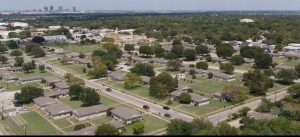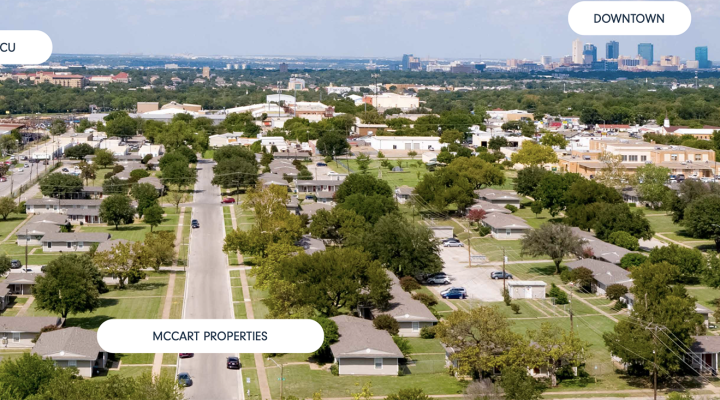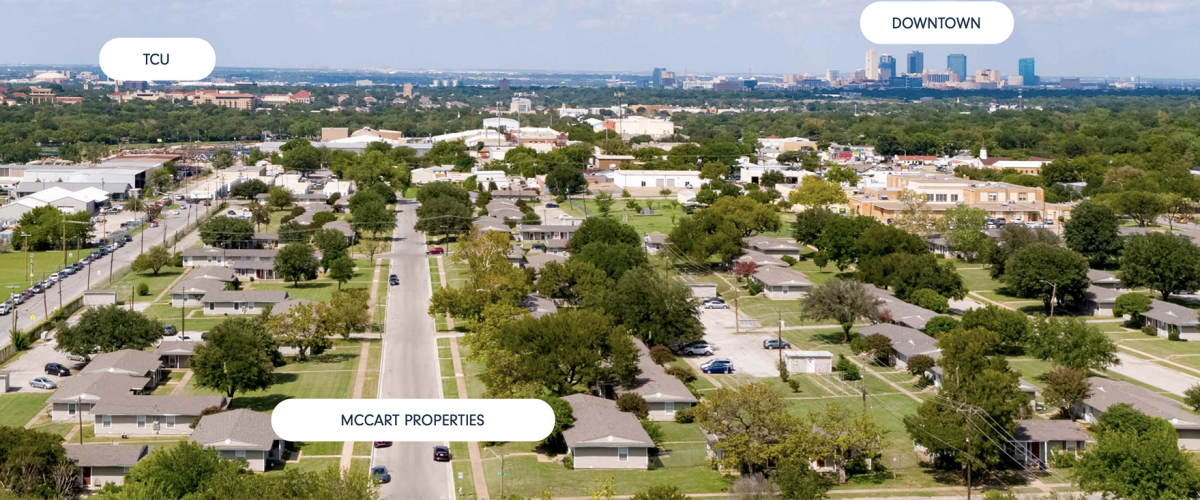Southwestern Baptist Theological Seminary has listed for sale a student housing village that encompasses nearly 24 acres of prime multi-housing real estate currently appraised at more than $11 million.
Carroll Park apartments encompasses 184 one- and two-bedroom units arrayed in duplexes and triplexes about a mile from the seminary’s main campus. The buildings are spaced widely apart with far more greenspace than most modern multi-housing complexes.

Example of duplexes and triplexes in Carroll Park.
The site is being marketed for its land and location, not for the buildings currently there, which almost certainly will be razed. A sales flyer from the real estate firm handling the property says up to 572 housing units could be built on the site with a zoning change.
The exiting units were built in 1951 as military housing, and the seminary purchased the property in 1965, renaming it for the school’s founding president, B.H. Carroll. The seminary in more recent years has built or renovated other student housing closer to campus. And with enrollment at the lowest point in decades, the demand for student housing also is lower.
Carroll Park sits in an older, well-worn section of South Fort Worth — with a higher-than-average crime rate — that is located just blocks from a tonier section of town surrounding Texas Christian University. The sales flyer for the property states: “Potential changes are coming to this Southside area that make this an excellent time for a developer to transform this site and positively impact the district leaving their mark for years to come.”
While the large parcel of land is appraised for tax purposes at more than $11 million, the likely sales price is much higher. The seminary reportedly faces significant financial challenges, which were among the factors recently causing Adam Greenway to abruptly resign as president.
The idea of selling Carroll Park has been under consideration for some time and is not a sudden decision made in light of the current financial stresses, according to sources with inside knowledge.

Carroll Park
Southwestern’s main campus sits on 200 acres first acquired in 1910, when the school moved from Waco to Fort Worth. At that time, “Seminary Hill” — one of the highest natural elevations in Tarrant County — was a remote location seven miles from downtown Fort Worth. The neighborhoods around the school grew especially in the post-war era, mainly populated with working-class families.
As Fort Worth’s middle-class and affluent populations moved farther south and north, the area around the seminary was left behind economically. The seminary itself is a large financial and stabilizing presence to the area.
Related articles:
What happened at Southwestern and why does it matter? | Analysis by Mark Wingfield


